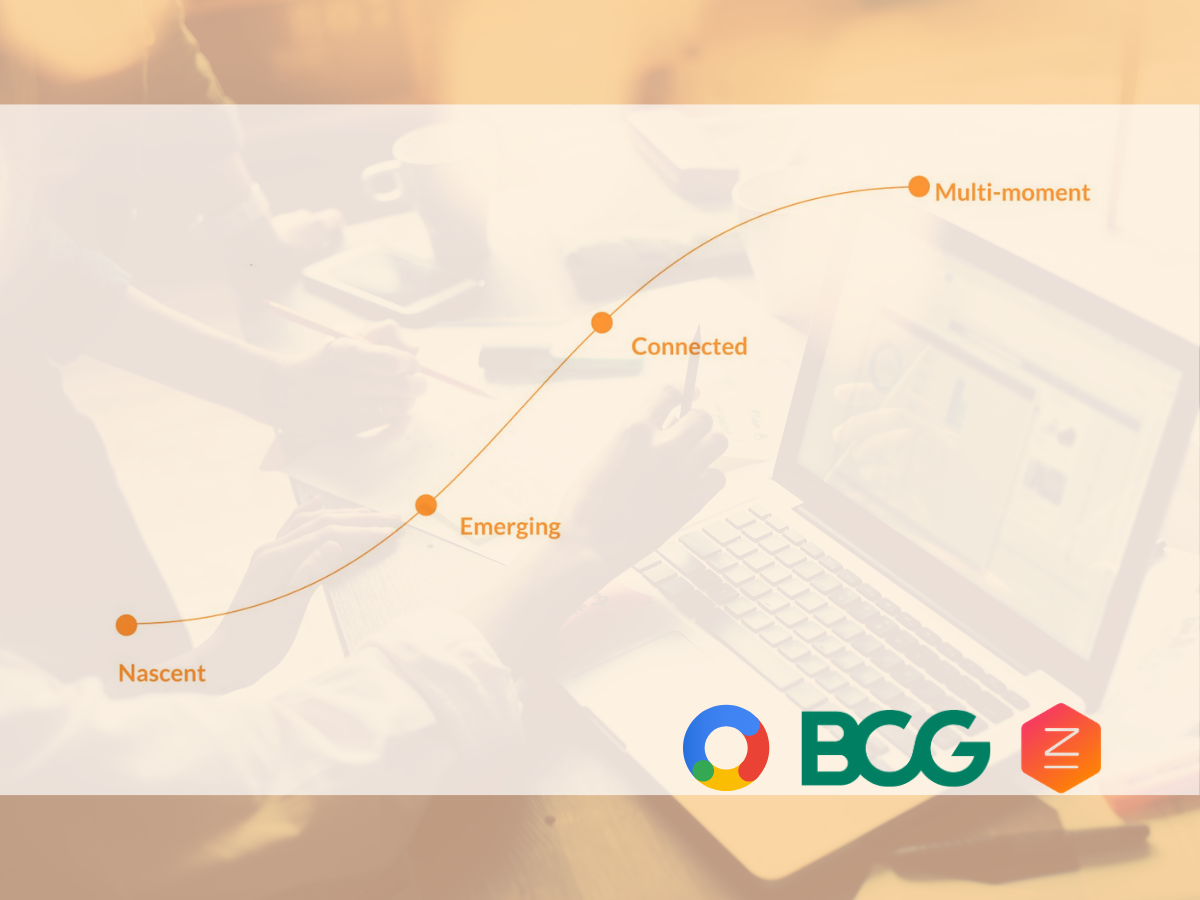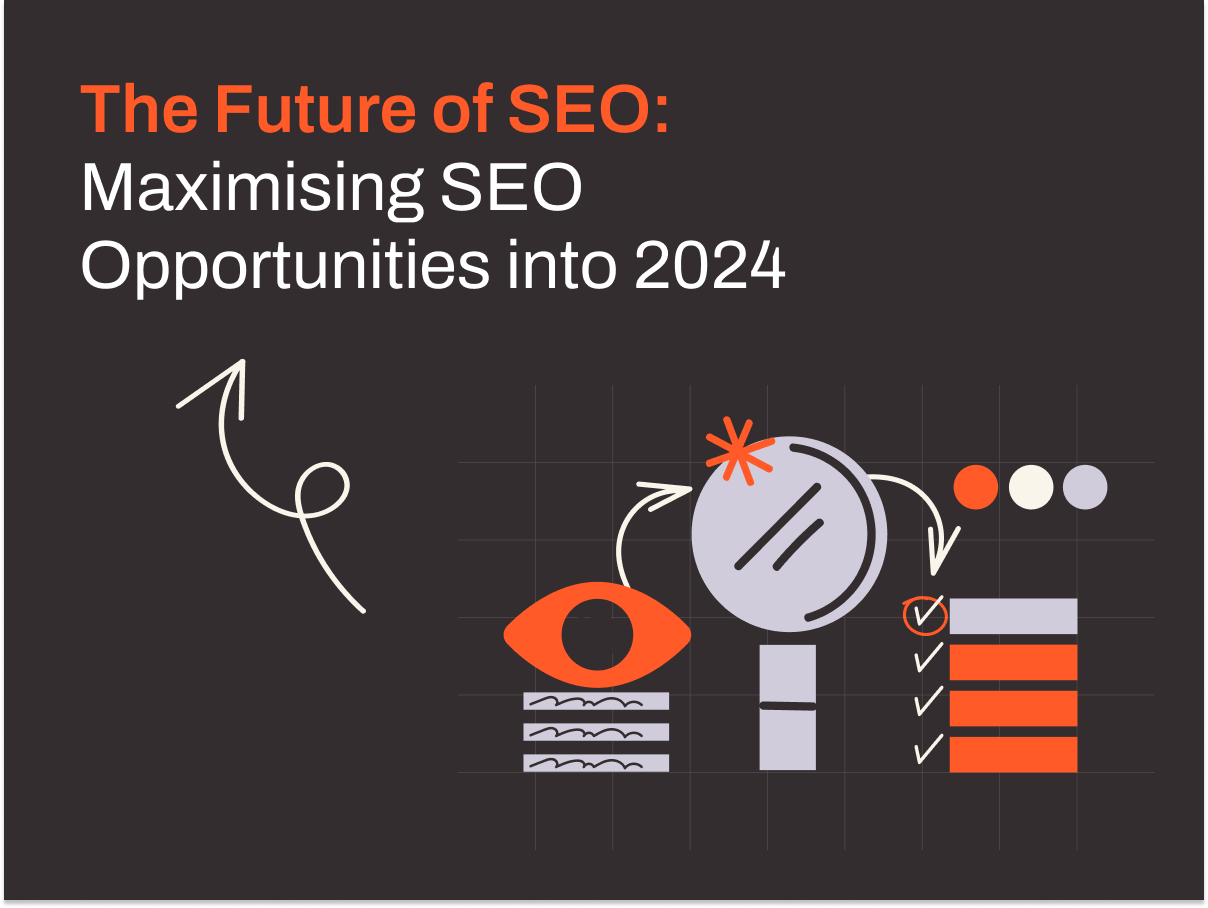Digital maturity is the key predictor of business success in the post-COVID world. Learn what digital maturity is, how important it is and how to measure it. We’ll walk you through our own digital maturity model and answer frequently asked questions.
Digital maturity: The key predictor of business success
All consumers expect digital engagement these days. Nothing new about it.
After all, digital leaders (like Amazon, Netflix and others) have been conditioning consumers for years to anticipate digital outreach, interaction and personalisation.
What nobody expected, however, was the COVID-19 pandemic, which accelerated the digitisation of customer interactions by several years.

Consumers, abruptly forced to change the ways they work and shop, have moved dramatically toward online channels in 2020.
Companies and industries have responded in turn.
As a result, businesses in the most unlikely of industries now routinely use data for customer segmentation, in-depth understanding of the customer journey, multi-channel messaging, and end-to-end measurement.
Data-driven digital marketing operations became the norm. A full digital transformation is taking place across the entire competitive landscape at a breakneck speed.
Companies that are late to adapt, risk being overtaken by digitally more mature competitors.
What is digital maturity?
Digital transformation is driven by new technologies and businesses must be able to respond to changes in how customers, partners, employees, and competitors use digital technologies.
However, implementing new technologies is only part of the story. Other issues, such as strategy, talent management, organisational structure, and leadership, are just as important, if not more important.
If digital transformation is the process of adapting your organisation so that it can effectively compete in the digital world, digital maturity is the measure of how far your organisation has advanced on that path.
Based on that, we define digital maturity as follows:
Digital maturity is a measure of how well your organisation is able to respond to changes in the digital world and integrate them into the organisation’s processes, including strategy, planning, and the management of human and other resources.
How important is digital maturity?
It turns out that digital maturity is a key predictor of how well a business will do in the future.
For organisations that improve their digital marketing maturity, and build their technical and organisational capabilities, the results can be impressive.
According to the recent research conducted by the Boston Consulting Group:
- Companies that deliver relevant content to consumers at multiple moments across the purchase journey, see cost savings of up to 30% and revenue increases of as much as 20%
- Companies that deploy machine-learning technologies and also use humans to apply strategic considerations and adjust for compatibility factors, can boost performance by an additional 15%
- Advanced audience targeting improved the cost per action (CPA) by up to 27%
- Automated bidding and creative optimisation improved CPA by up to 44%
- Data-driven attribution can improve CPA by an estimated 6%
- Advanced technologies increase online transactions by up to 50% and improve the return on advertising spend (ROAS) by up to 33%

Deloitte studied the differences between high- and low-maturity companies and found that higher-maturity companies were:
- 3 times more likely to report industry-leading revenue growth and net profit margins

- 2-3 times more likely to report improvements in product/service quality, efficiency, customer satisfaction, and employee engagement
- More likely to report positive impact on customers’ lifetime value and increase in sales from new products/services

- Significantly more likely to have digital business models in place
Of the studied pivots, data mastery and intelligent workflows were responsible for almost half the improvements in efficiency, revenue, product/service quality, customer satisfaction, and employee engagement.

How to measure digital maturity?
By now, you should be all excited about improving your digital maturity. After all, the future of your business may (and likely does) depend on it.
But, how do you go about it? And, how do you measure it?
Google collaborated with the Boston Consulting Group to identify four stages of digital maturity:
 Stage 1: Nascent
Stage 1: Nascent
Companies at this stage lack trusted and transparent data about customer behaviour. If they do collect data, they don’t trust it or lack the analytical capabilities that can turn data into plans, programs, and initiatives.
The biggest challenge at this stage is for companies to change their mindset and to put in place the foundation for future improvements. Typically, this requires an active and visible C-suite sponsor. It also demands the involvement and cooperation of internal and external stakeholders.
Changes will affect all areas of the organisation. HR will have to revise position descriptions, identify new career paths and incentive schemes. The company will probably want to bring in external help to fill capability gaps and use specialised agencies to facilitate buy-in and secure cooperation in-house.
Stage 2: Emerging
Companies at this stage are learning to work with the data they collect and build capabilities that allow them to turn that data into plans, programs, and initiatives.
Data starts to get shared across teams, and KPIs and business jargons are being unified across business units.
More emphasis is put on documenting the processes that allow the company to scale efficiently.
A philosophy of test-and-learn is adopted, focussing on learning and communicating new knowledge.
The key challenges for organisations at this stage are to start building connections among different business units and learning to speak the same language across the organisation.
Just as during the previous stage, external agencies with specialised expertise could help bridge any gaps and advance the progress.
Stage 3: Connected
Companies at this stage are trying to coordinate multiple channels, drive incremental revenue, and achieve efficiencies through better media execution.
The more advanced companies begin to establish cross-functional teams that combine all relevant expertise. Some even bring together offline channels and online marketing to work more closely together. All teams work toward common KPIs and are often supported by dedicated measurement experts.
The key challenge at this stage is developing the technical abilities that allow organisations to combine internal and external sources of data, provide insights about audiences, inform creative work, and automate messages for fast campaign development, testing and adjustment.
Applying machine learning-based technologies at this stage helps to automate deployment and drive efficiencies in execution.
Stage 4: Multi-Moment
Companies at this stage make every touchpoint count. They drive sales through better cross-channel marketing and by delivering better, more personalised customer experiences at every stage of the customers’ journey. Additionally, they use advanced technology and automation in order to lower costs and increase efficiencies.
Technology objectives are linked to business KPIs. Sophisticated attribution models are used to understand marketing efforts and to optimise value. Key proprietary capabilities are being integrated into the organisation and agile teaming is used to implement things at digital speeds.
The key challenge at this stage is to follow through with redesigned career paths and incentive programs in order to facilitate and incentivise agile teaming.
The MGO digital maturity model
While extremely solid in its concept, the Google model is focussed on the Google Marketing Platform, making its practical application limited (Google basically uses it to sell you on their tools).
So, we took Google’s model as a basis and developed our own digital maturity model by expanding it to cover all key maturity differentiators.
The model will tell you exactly:
- Where you are currently
- Your digital marketing maturity (grade)
- The tasks needed to get you to the next stage
- The technology you need to invest in
- The team you need to have to get you there
- The documentation you need to create
- The frequency of recurring tasks
- The training you need to get for your team
The process consists of 3 steps:
Step 1: Audit

Step 2: Workshop

Step 3: Roadmap

Please contact us for a free consultation to discuss how we can help you improve your digital maturity!
Frequently asked questions
When is the right time to begin working on digital maturity?
The sooner, the better. Digital maturity is a gradual process that takes time. No organisation can become digitally mature overnight and each stage offers new ways to grow and improve. Additionally, as technologies continue to develop new opportunities open up. So, the process is never complete.
How will our organisation change as we become more digitally mature?
It’s impossible to say for sure. Just as most kids don’t grow up to be firefighters, sports stars, ballet dancers, or astronauts, the process of becoming more digitally mature can take companies in unexpected directions.
However, don’t let this lack of foreknowledge keep you from embarking on the process! Only once you start moving, the details of what digital maturity means for your company will begin to take shape.
How involved do we need to be in order to become more digitally mature?
Very. Digital maturation will not happen automatically. It’s also not something that your managers or employees will instinctively know how to do.
The process requires conscious effort in order to acquire a working knowledge of digital trends, to lead the organisation, and to adapt in the right ways.

 Stage 1: Nascent
Stage 1: Nascent








